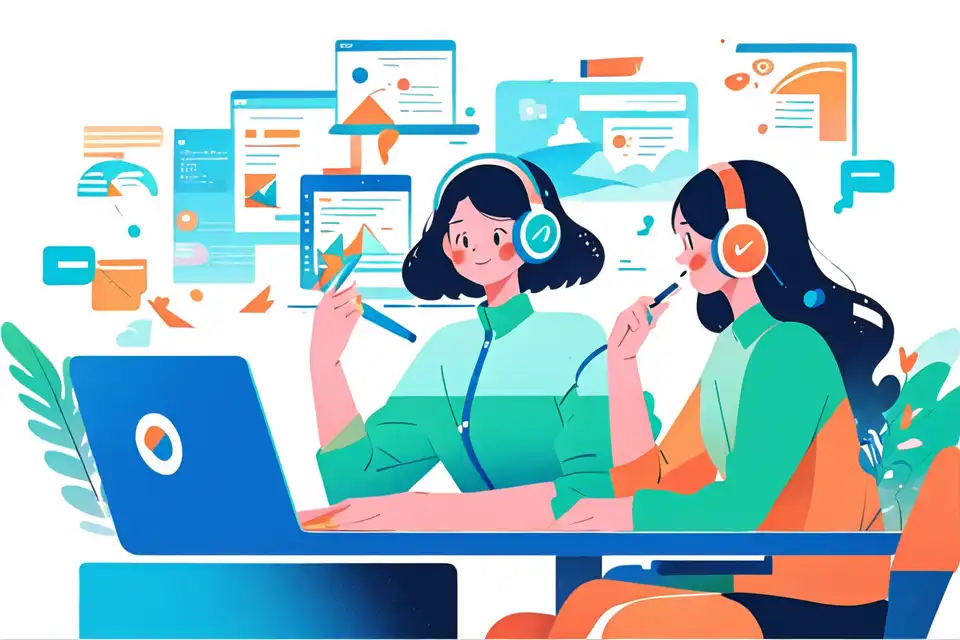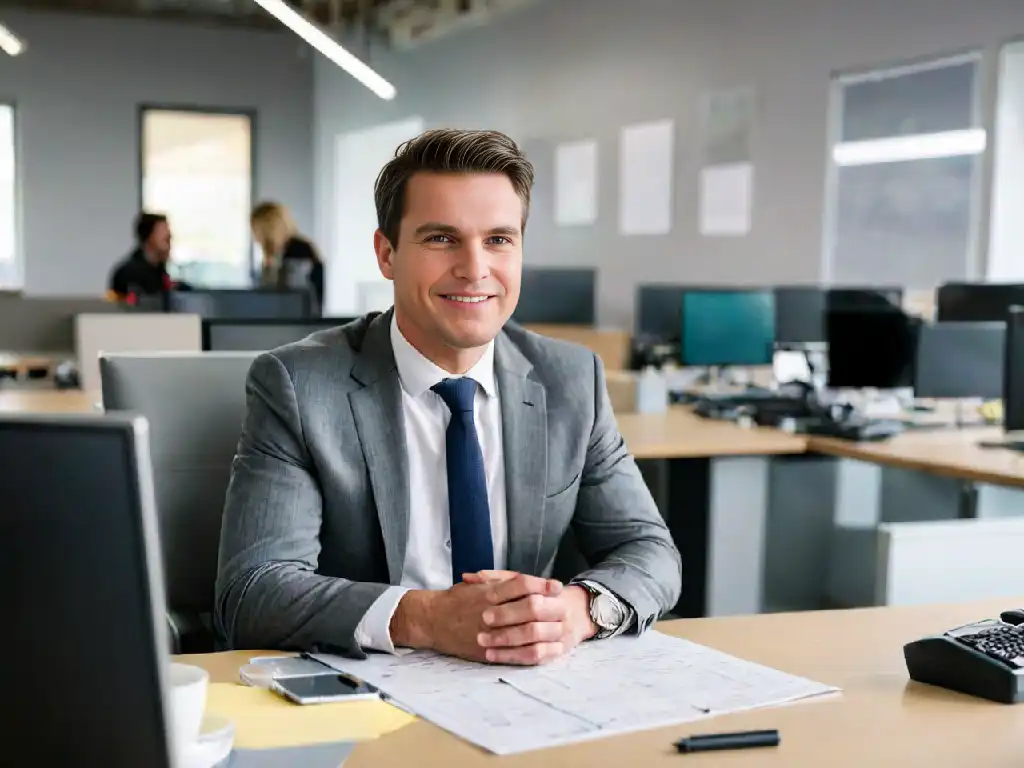Interview Questions for Web Designers (with Top Questions and Answers)
Mastering the Art of Job Interviews for interview questions for web designers: Job Interview Examples and Insights
Try Lark for Free
Aspiring to excel in the field of web design? This comprehensive guide is tailored to help you ace your web design interviews by providing valuable insights into what hiring managers are looking for, how to prepare effectively, the top questions you might encounter, and essential do’s and don’ts to keep in mind. Whether you're a fresh graduate eagerly stepping into the job market or an experienced designer looking to make a career move, this guide will equip you with the knowledge and confidence necessary to land your dream web design role.
What hiring managers seek in web designers
When it comes to hiring a web designer, companies seek professionals who demonstrate a blend of technical expertise, creativity, and an understanding of user experience. Let’s explore the crucial attributes that recruiters look for in potential web designers.
-
Technical Proficiency: Proficiency in HTML, CSS, and JavaScript is fundamental. Refined skills in graphic design software and experience with responsive and mobile-first design are highly valued.
-
Design Aesthetics: A demonstrated ability to create visually appealing, user-centric designs that align with modern trends and branding guidelines is essential.
-
User Experience Optimization: A strong understanding of creating intuitive user interfaces and optimizing user experiences through effective design choices is imperative.
-
Portfolio Quality: Hiring managers often seek a well-rounded portfolio showcasing a diverse range of projects that highlight the designer's technical skills and creativity.
-
Adaptability and Collaboration: The ability to adapt to evolving design trends and collaborate effectively with cross-functional teams is highly valued.
How to prepare for a web design interview
Preparing for a web design interview requires a strategic approach to showcase both your technical acumen and creative flair. Here are steps you should take to ensure you’re ready to impress your potential employers.
Step 1: Research the Company
Dive into the company's website, study its design, and understand its brand identity. Familiarize yourself with their products, services, and industry positioning. This research will help you tailor your portfolio and interview responses to align with the company's vision.
Step 2: Polish Your Portfolio
Your portfolio is a reflection of your skills and aesthetic sense. Select a range of projects that exemplify your versatility and capability. Be prepared to discuss the design thinking behind each project and the challenges you faced.
Step 3: Practice Common Interview Questions
Familiarize yourself with frequently asked web design interview questions and formulate articulate responses. Consider creating mock designs based on sample design briefs to further demonstrate your skills during the interview.
Use Lark for video interviews and candidate tracking.
Top 5 interview questions for web designers and how to answer them
In a web design interview, you're likely to encounter a series of questions that are tailored to assess your technical know-how, problem-solving approach, and creativity. Below are the top 5 questions often posed to web designers, along with guidance on how to craft impressive responses.
"Can you walk us through your design process of a recent project?"
Why does this question matter?
This question helps the interviewer understand your approach to problem-solving, visual design, and user experience. It showcases your ability to think critically and communicate a structured design methodology.
What do they listen for in your answer?
Interviewers listen for a clear and well-defined process that encompasses research, ideation, prototyping, and user testing. They also seek evidence of collaboration with other team members and stakeholders.
Sample answer:
"I typically start by understanding the project requirements and conducting extensive research on the target audience and competitors. Once I have a solid grasp of the project's context, I move on to creating wireframes to visualize the layout and gather feedback. From there, I proceed to develop high-fidelity mockups and interactive prototypes. This iterative process ensures that the final design is both visually appealing and user-friendly."
"How do you ensure your designs are accessible to users with disabilities?"
Why does this question matter?
This question aims to evaluate your awareness of web accessibility standards and your ability to create inclusive designs that cater to users with diverse needs.
What do they listen for in your answer?
Interviewers seek evidence of your familiarity with accessibility guidelines such as WCAG. They also look for examples of how you've implemented accessible design features in your past projects.
Sample answer:
"Incorporating accessibility features is paramount in my design process. I ensure that the color contrast ratios comply with WCAG standards, and the website is navigable using keyboard-only navigation. Additionally, I conduct user testing with individuals representing a range of disabilities to gather feedback and refine the design."
"Can you discuss a design project that posed significant challenges and how you overcame them?"
Why does this question matter?
This question assesses your problem-solving abilities and resilience in the face of design challenges. It demonstrates your adaptability and capacity to learn from setbacks.
What do they listen for in your answer?
Interviewers look for specific examples of challenges you encountered and the strategies you employed to address them. They also seek insights into the outcomes of those challenges and the lessons you derived from them.
Sample answer:
"In a recent project, we encountered a significant performance issue due to the heavy graphical content. To resolve this, I collaborated with the development team to implement lazy loading and optimized image compression techniques, significantly enhancing the website's speed without compromising the visual appeal."
"How do you approach collaborating with developers and other team members?"
Why does this question matter?
This question gauges your communication and teamwork skills. It assesses your ability to collaborate with developers, marketers, and other team members to realize a cohesive and functional design.
What do they listen for in your answer?
Interviewers seek evidence of your capacity to adapt and communicate effectively with cross-functional teams. They aim to understand how you balance creative freedom with constructive feedback.
Sample answer:
"I believe open collaboration is vital. I foster strong communication with developers and stakeholders throughout the design process to ensure alignment with technical capabilities and business objectives. I value constructive feedback and view it as an opportunity to refine the design and deliver a compelling user experience."
"How do you stay updated with the latest design trends and technologies?"
Why does this question matter?
This question delves into your motivation to continually evolve as a designer. It seeks to understand your initiative in staying abreast of industry trends and innovations.
What do they listen for in your answer?
Interviewers look for a proactive approach to professional development, such as attending design-related workshops, contributing to design communities, and incorporating emerging trends in your portfolio.
Sample answer:
"I maintain a keen interest in design by regularly attending webinars, subscribing to design publications, and participating in design forums. I also allocate time for personal projects to experiment with new techniques and technologies, enabling me to integrate innovative elements into my designs."
Do's and don'ts for web designers interviews
Here’s a simple Do’s and Don’ts guide to help you make an indelible impression during your web design interviews.
Do's
- Showcase a Diverse Portfolio: Exhibit a broad spectrum of projects that highlight your versatility and ability to tackle various design challenges.
- Demonstrate Collaboration Skills: Emphasize instances where you effectively collaborated with developers and other team members to achieve well-rounded designs.
- Stay Updated with Design Trends: Make a point to illustrate your familiarity with the latest design trends and how you incorporate them into your work.
Don'ts
- Overlooking User Experience: Avoid showcasing designs that prioritize aesthetics at the expense of user experience, usability, and accessibility.
- Underestimating Communication Skills: Don’t underestimate the importance of articulating your design decisions and vision clearly during the interview process.
- Disregard for Feedback: Steer clear of portraying a rigid approach to design and a lack of openness to constructive criticism.
Learn more about Lark x Employment








